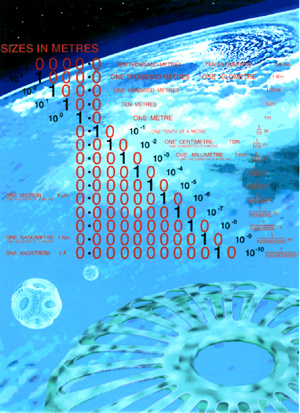Emiliania huxleyi Statistics
The following figures are rather approximate, and should be treated with
some caution. There are at least two different strains of the species (van
Bleijswijk, 1991) with some morphological differences between them. Changes
in the nutrient status of the water, light intensity, and other factors may
well also induce cellular changes such as cell size. With organisms that
are so small, experiments are difficult and errors in measurement can be
made.
Cell diameter: 4 x 10^-6 m.
Cell volume (assuming a spherical shape, not counting coccoliths):
30 x 10^-18 m3.
Cellular organic carbon content: 10 x 10^-12 g organic C cell-1.
Cellular weight (assuming 50% of biomass = carbon): 20 x 10^-12 g
cell-1.
Number of coccoliths per cell: 30.
Coccosphere diameter: 5 x 10^-6 m.
Coccolith diameter: 2.5 x 10^-6 m.
Coccolith carbon content: 0.54 or 0.28 x 10^-12 g calcite C coccolith
(Balch WM et al, L&O 41:1684 and Fagerbakke KM et al, Sarsia 79:349
respectively).
Coccolith calcium content: 0.67 x 10^-12 g calcite Ca coccolith.
The cells and coccoliths are very small. In terms of mass and
volume, an Ehux cell is to a person as a person is to Mount Everest.
The two pairs each differ by about 15 orders of magnitude.

Picture courtesy of
Glynn Gorick
(copyright held).
Ehux
home page
Toby Tyrrell : T.Tyrrell@noc.soton.ac.uk
